- Home
- Don Pendleton
Death Run Page 16
Death Run Read online
Page 16
* * *
Bolan knew he was in trouble when he examined the explosive device. It differed radically from the schematic drawings he'd pulled from Gunthar Maurstad's corpse and the instructions he'd received from Kurtzman didn't match up with what he saw before him. Kurtzman had a team of experts on standby to help talk him through disabling the device, but he had no cell phone signal in the underground storage area covered by thirty stories of steel and concrete.
A digital timer on the device indicated that it would explode in a little over six hours. Bolan sketched out a schematic of the wiring he saw on the device and went outside to call Kurtzman.
Kurtzman patched him into a conference call with the group of explosive experts that Hal Brognola had assembled to assist the Executioner in dismantling the device.
"It sounds like Maurstad had to deviate from his original plan at the last minute," Tom Gardiner, one of the team members, said, and the others concurred. "My guess is that he had to rig some sort of off-the-shelf clock to the detonator and was forced to improvise."
The men had copies of Maurstad's original drawings, and Bolan described the changes he'd seen on the actual device.
"This isn't good," Gregory Lefrooth, one of the other team members, said. "I think I know what he did." Lefrooth explained his theory to the others and they agreed that his hypothesis was almost certainly correct.
"This could be disabled by clipping a single wire. The trouble is that there's no way for us to tell which wire it is. The only way would be to dismantle the device, but that would risk detonation."
"It doesn't sound like a very stable setup," Gardiner interjected. "I think upsetting the detonator would almost certainly set off the bomb."
The others agreed.
"It sounds like clipping a wire is the clear way to go," Bolan said. "So how do I decide which wire it is?"
"From what you describe," Gardiner said, "I don't think Maurstad set the bomb up to detonate if you clip the wrong wire."
"So I can just start cutting wires until the clock quits counting down?" Bolan asked.
"I don't think it will be that easy. I believe that cutting the wires might affect the rate of the countdown. Cut the wrong wire, and six hours could become six minutes. Or six seconds."
"Couldn't I just disable the timer?" Bolan asked.
"You could, but that won't stop the detonator. The timer is just there to provide information; it doesn't control anything. The only thing you'll accomplish by disabling the timer would be to prevent you from knowing when the bomb was going to explode."
"So I'm going to have to start cutting wires and hope for the best."
"That looks like it's your only option," Gardiner said.
* * *
Bolan crouched over the device with wire cutters in hand. He estimated how long it would take him to cut all the wires should he clip the wrong one first and speed up the detonation process. The fact that the device was fairly large — the tubular object stood almost four feet high and was about thirty inches in diameter at its widest point — and that the wires were not located in one spot but ran in and out of the complex device in what appeared to be a haphazard fashion, conspired to slow down his reaction time. In his mind he plotted out an order for cutting the wires that seemed most possible to do in less than six seconds.
With one eye on the timer, he cut the first wire, ready to start cutting the rest as fast as he could should the timer speed up. It didn't speed up, but neither did it stop counting down. He moved to the next wire, again mentally preparing himself for the mad dash of cutting all the wires in under six seconds should he clip the wrong wire.
When Bolan clipped the next wire, the countdown on the timer switched from five hours, seventeen minutes, and twenty-six seconds to five minutes and seventeen seconds. Bolan still had seven wires to cut, but even though this last cut hadn't worked out as planned, he continued in the same sequence he'd mapped out in his head. It was the only way he would be able to cut the remaining six wires in the allotted time should the minutes switch to seconds.
Bolan cut the next wire in his sequence and nothing happened, but the wire after that tripped the sequence from minutes to seconds. The soldier switched into his alternative plan without hesitation. His life had depended on his timing ever since he'd begun his war and he'd developed a mental clock that was as reliable as a metronome. He clipped the first, the second, and the third wires in less than three seconds, but the fourth was around the far side of the device. With his mental clock keeping pace with the timer, he reached around and clipped the final wire.
The timer stopped.
His mental clock told him that he had less than fractions of a second to spare before the device detonated. Mack Bolan had perhaps the strongest nerves of any man who had ever walked the Earth, but coming this close to being on top of an exploding nuclear bomb had shaken him. It wasn't his own mortality that had rattled his nerves; it was the fact that he'd come so close to letting down his country and bringing about the deaths of hundreds of thousands — perhaps millions — of people. The soldier took a deep breath and looked at the timer. He'd stopped the countdown with just twenty-three one hundredths of a second left before detonation.
Bolan realized he was drenched with sweat. It was hot in the storage area behind the loading docks, but the soldier knew that wasn't the reason for the sweat. He looked around at the other men in the room. Osborne and the four surviving members of the BNG were as drenched with sweat as he was. The five men stared at him, their eyes wide, their jaws hanging slack, as if trying to speak, but no one said a word.
After an uncomfortably long time, Osborne broke the silence.
"You did it?" he asked.
"We did it," Bolan replied.
"What about those four?" Osborne asked.
"I told them they're free to go, so they're free to go."
The Executioner looked at the four men. "This doesn't mean my friend here won't come after you the next time you break the law," he told them. "You've seen what he's like when he's mad. Now get out of here before I change my mind."
When they'd left, Bolan walked out to the loading bay and called Kurtzman to have him send in a team to dispose of the device.
Epilogue
Eddie Anderson got a good start off the pole position and rode one of the best races of his life. The only person who could run with him was his teammate, Daniel Asnorossa, but he never got within three seconds of Anderson.
He was riding the race of his life, but he couldn't shake the thought of his brother Darrick from his head, so he decided to go with it and imagined he was following Darrick. Eddie had watched Darrick race this track dozens of times, and he'd memorized every line his older brother had ever taken through every corner, but he'd never been able to put together the perfect lap here quite like Darrick could. Now, in his imagination, he was watching Darrick take the absolute perfect line. Eddie poured on the gas and was running well ahead of the pace of everyone but Asnorossa, but he wasn't going fast enough to catch the image of his brother that he imagined in his head.
Darrick's team had pulled out of the race entirely. The discovery of the bodies in the Team Free Flow garage had created incredible turmoil in the paddock, and there had even been talk of canceling the race. Ultimately the promoters decided to go on with the event, figuring that the body count might rise significantly if they tried to turn back tens of thousands of rabid fans on race day. They figured the crowd would be especially incensed once they learned the reason for the cancellation had been because of a tragedy that had befallen a third-rate back marker team that absolutely no one cared about after the death of its star rider, Darrick Anderson.
No one really cared about Team Free Flow, but Darrick's name still meant something to the crowd, and Eddie had noted hundreds of people wearing T-shirts with images of Darrick from Darrick's winning years. Many even carried banners with Darrick's name on them.
But even more carried banners with Eddie's name on them, and
for every T-shirt with Darrick's image, there were three with Eddie's. But the Darrick banners were all that mattered to Eddie. He was riding for his brother as much as he was riding for himself and his team. And he was riding extremely well. He passed his pit board, which told him that Asnorossa had fallen to four seconds behind him.
In his mind he was chasing his brother, who seemed to disappear into the heat waves shimmering up off the hot asphalt. Eddie was riding right on the edge of his tire-performance envelope, and even though he knew better than to risk losing the front end and crashing, costing him valuable points and perhaps ultimately the championship, he pushed his bike even harder trying to catch up with his imagined sibling.
In his mind, Eddie noticed his brother was taking slightly different lines through the corners than he'd remembered him taking. Eddie followed these imagined lines, which were unorthodox, but they worked. He apexed a bit earlier in some corners and a bit later in others, deviating from the accepted fast line through Laguna Seca, but there was a method to his madness. Eddie began to adopt the lines he imagined his brother taking and he started to shave time off his laps. After putting together several laps with the new lines, he passed his pit board to see that he'd just set a new lap record, and not just the lap record for race times — he'd set an all-time lap record, beating his qualifying record set the previous day by nearly half a second.
Eddie knew he had more in him and his bike. He continued to follow the strange lines he imagined his brother taking and his lap times continued to drop. Four laps before the race was over, he set his fastest lap, beating his record of the previous day by over a second.
Asnorossa still hung with him until his fastest lap, falling back only five seconds by the time Eddie set the record. But on that incredible lap, Asnorossa pushed it too hard and he went off the track in Rainey Curve, exactly where Eddie had gone off in practice. Asnorossa almost made it back on track but dropped the bike in the kitty litter just off the edge of the asphalt. He got the bike back up before it stalled and got back on track. The pair of Ducatis had built up such an amazing lead over the third-place rider that Asnorossa was eventually able to bring his bike in at second place, despite his off-track adventure.
Meanwhile Eddie kept up his blistering pace, but he still couldn't catch his imagined riding companion. He was still going faster than anyone ever had before, and on the final lap Eddie wheelied past the finish line, taking the checkered flag.
The crowd lost its collective mind. In his imagination, Eddie saw Darrick turn around and flash him a V-for-victory sign.
Table of Contents
Don Pendίeton's The Executioner Death Run
The Mack Bolan Legend
Prologue
1
2
3
4
5
6
7
8
9
10
11
12
13
14
15
16
17
18
Epilogue

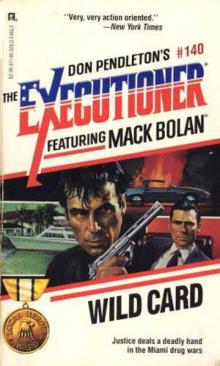 Wild Card
Wild Card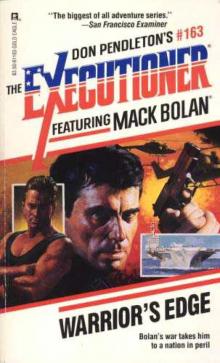 Warrior's Edge
Warrior's Edge Blood Vortex
Blood Vortex Lethal Vengeance
Lethal Vengeance Killing Kings
Killing Kings Cold Fury
Cold Fury Righteous Fear
Righteous Fear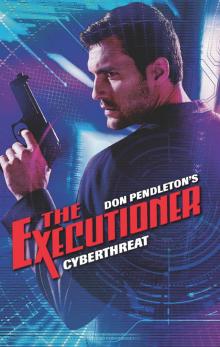 Cyberthreat
Cyberthreat Stealth Assassin
Stealth Assassin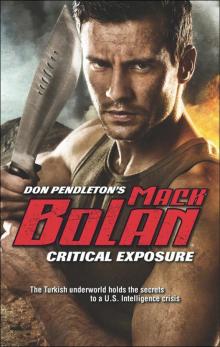 Critical Exposure
Critical Exposure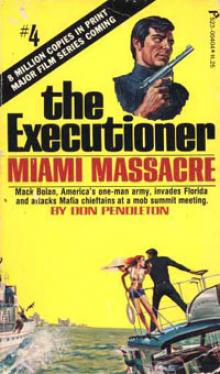 Miami Massacre te-4
Miami Massacre te-4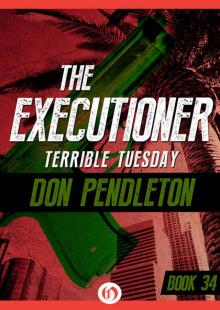 Terrible Tuesday
Terrible Tuesday Dying Art
Dying Art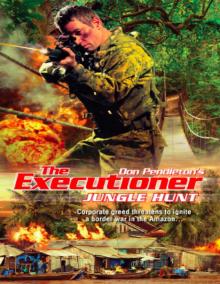 Jungle Hunt
Jungle Hunt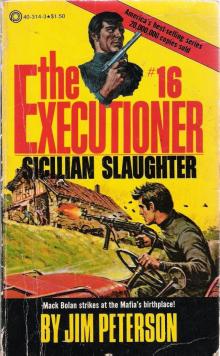 Sicilian Slaughter
Sicilian Slaughter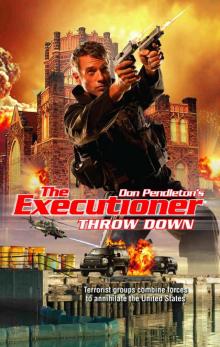 Throw Down
Throw Down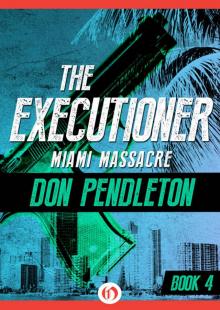 Miami Massacre
Miami Massacre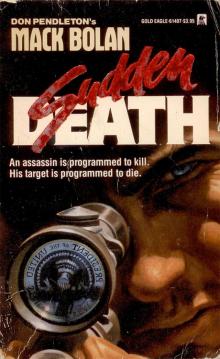 Sudden Death
Sudden Death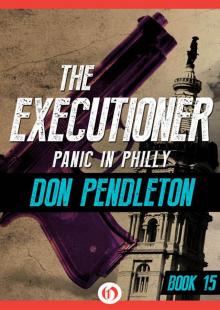 Panic in Philly
Panic in Philly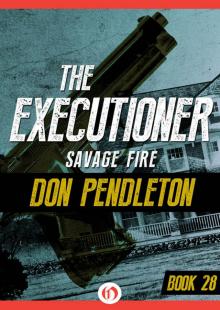 Savage Fire
Savage Fire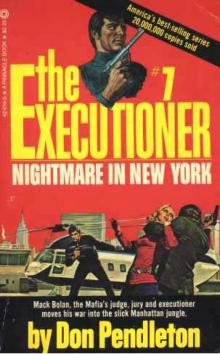 Nightmare in New York te-7
Nightmare in New York te-7 Omega Cult
Omega Cult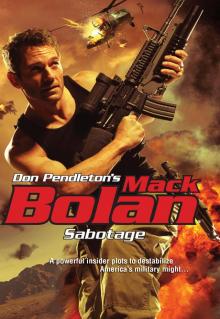 Sabotage
Sabotage Viral Siege
Viral Siege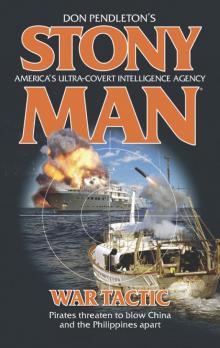 War Tactic
War Tactic Thunder Down Under
Thunder Down Under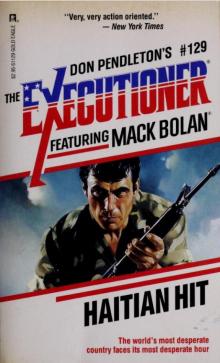 Haitian Hit
Haitian Hit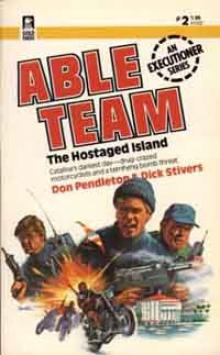 The Hostaged Island at-2
The Hostaged Island at-2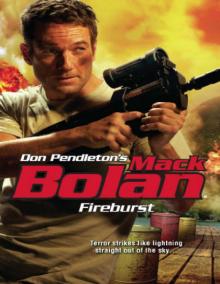 Fireburst
Fireburst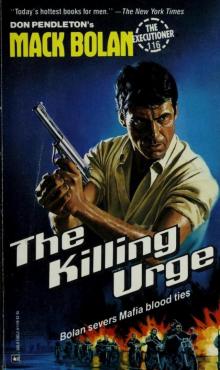 The Killing Urge
The Killing Urge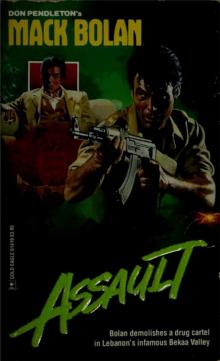 Assault
Assault Ashes To Ashes: Ashton Ford, Psychic Detective
Ashes To Ashes: Ashton Ford, Psychic Detective Flight 741
Flight 741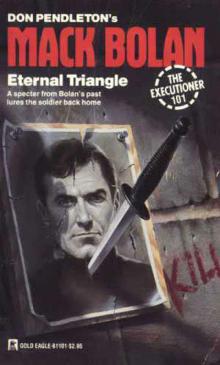 Eternal Triangle
Eternal Triangle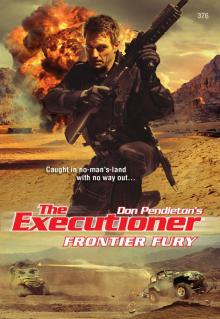 Frontier Fury
Frontier Fury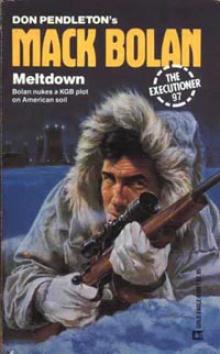 Meltdown te-97
Meltdown te-97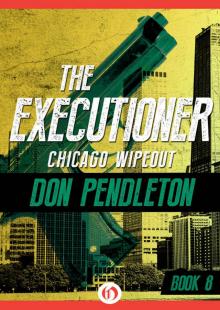 Chicago Wipeout
Chicago Wipeout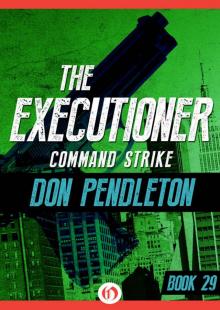 Command Strike
Command Strike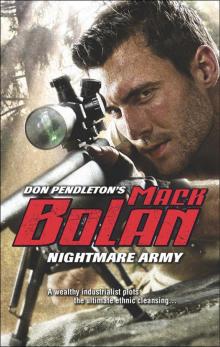 Nightmare Army
Nightmare Army Ivory Wave
Ivory Wave Combat Machines
Combat Machines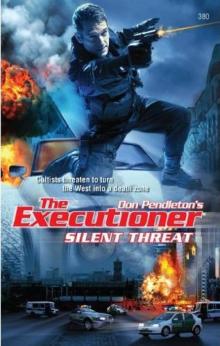 Silent Threat
Silent Threat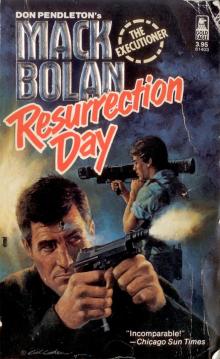 Resurrection Day
Resurrection Day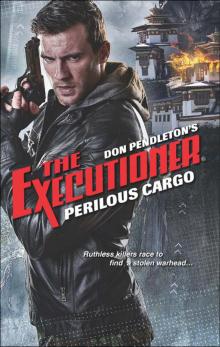 Perilous Cargo
Perilous Cargo Syrian Rescue
Syrian Rescue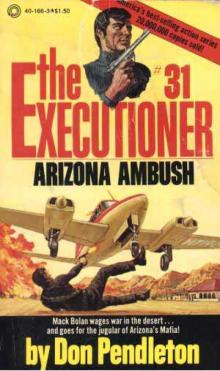 Arizona Ambush te-31
Arizona Ambush te-31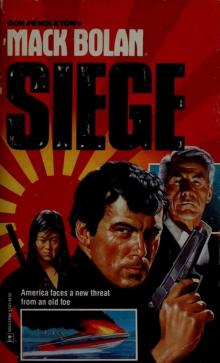 Siege
Siege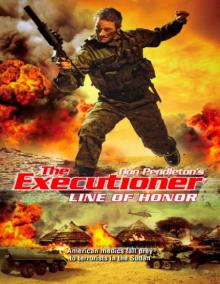 Line of Honor
Line of Honor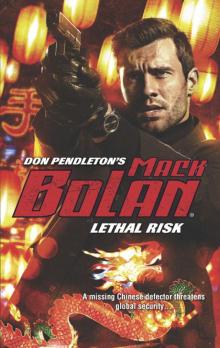 Lethal Risk
Lethal Risk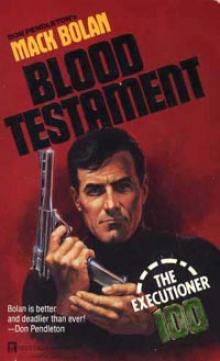 Blood Testament te-100
Blood Testament te-100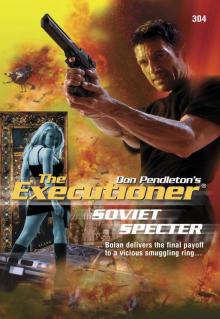 Soviet Specter
Soviet Specter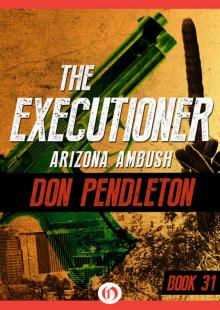 Arizona Ambush
Arizona Ambush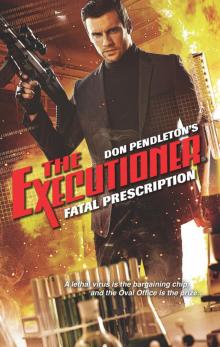 Fatal Prescription
Fatal Prescription Deep Recon
Deep Recon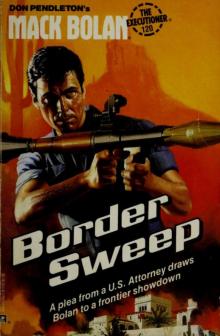 Border Sweep
Border Sweep Life to Life
Life to Life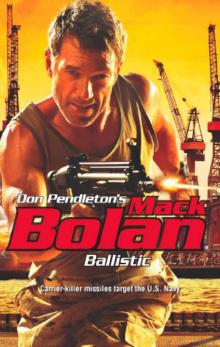 Ballistic
Ballistic Hellbinder
Hellbinder Time to Time: Ashton Ford, Psychic Detective (Ashton Ford Series Book 6)
Time to Time: Ashton Ford, Psychic Detective (Ashton Ford Series Book 6)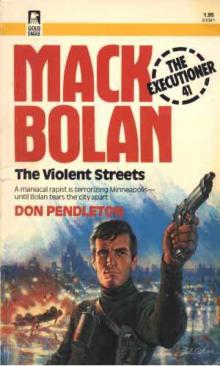 The Violent Streets te-41
The Violent Streets te-41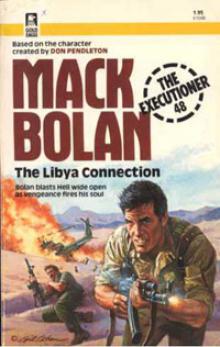 The Libya Connection te-48
The Libya Connection te-48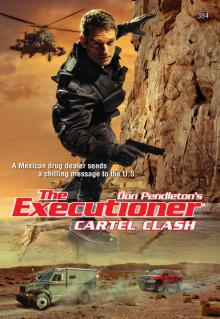 Cartel Clash
Cartel Clash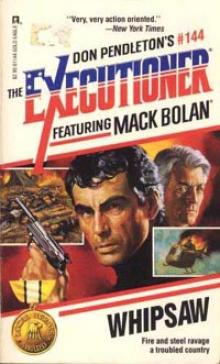 Whipsaw te-144
Whipsaw te-144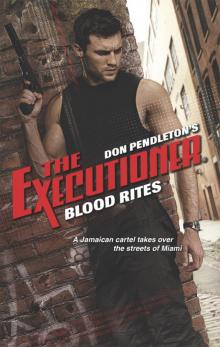 Blood Rites
Blood Rites Triangle of Terror
Triangle of Terror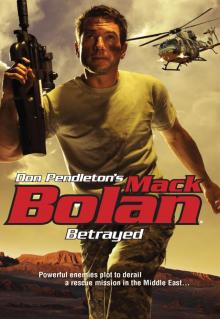 Betrayed
Betrayed San Diego Siege
San Diego Siege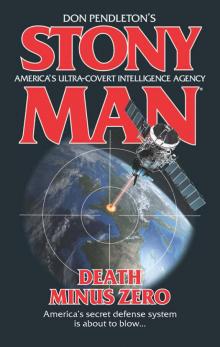 Death Minus Zero
Death Minus Zero Arctic Kill
Arctic Kill Mind to Mind: Ashton Ford, Psychic Detective
Mind to Mind: Ashton Ford, Psychic Detective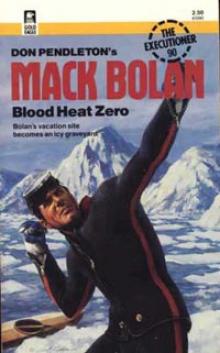 Blood Heat Zero te-90
Blood Heat Zero te-90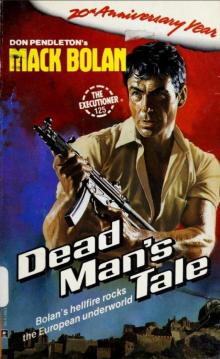 Dead Man's Tale
Dead Man's Tale Sunscream te-85
Sunscream te-85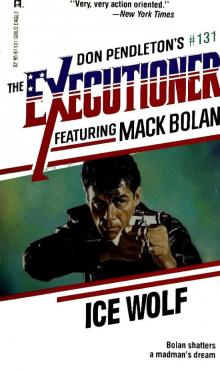 Ice Wolf
Ice Wolf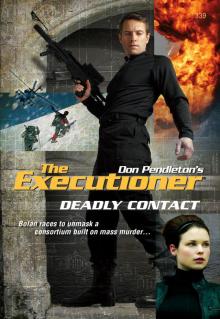 Deadly Contact
Deadly Contact The Cartel Hit
The Cartel Hit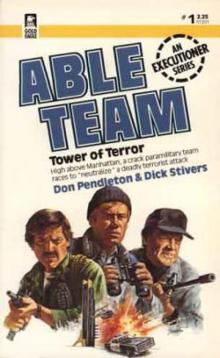 Tower of Terror at-1
Tower of Terror at-1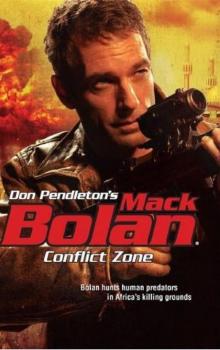 Conflict Zone
Conflict Zone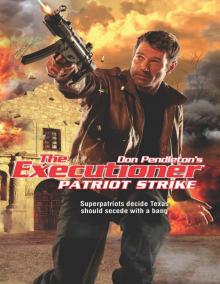 Patriot Strike
Patriot Strike Point Blank
Point Blank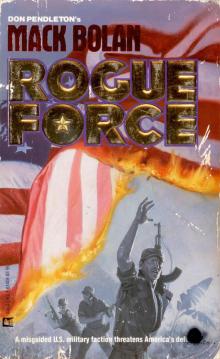 Rogue Force
Rogue Force Patriot Play
Patriot Play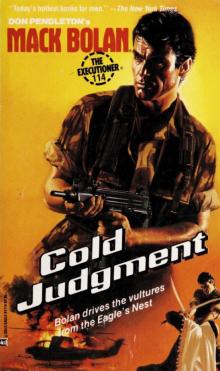 Cold Judgment
Cold Judgment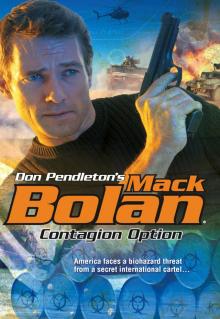 Contagion Option
Contagion Option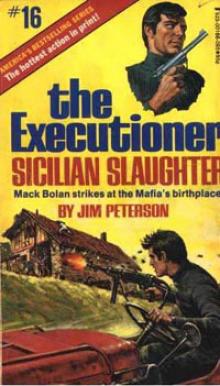 Sicilian Slaughter te-16
Sicilian Slaughter te-16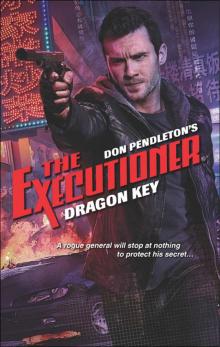 Dragon Key
Dragon Key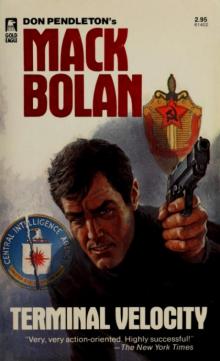 Terminal Velocity
Terminal Velocity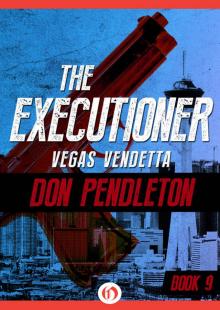 Vegas Vendetta
Vegas Vendetta Ashes To Ashes
Ashes To Ashes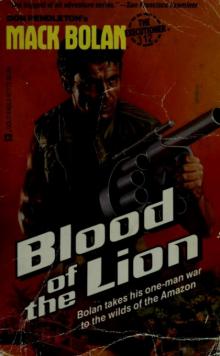 Blood of the Lion
Blood of the Lion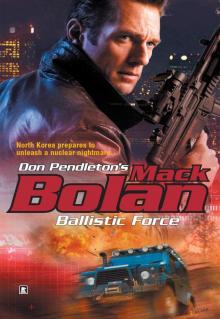 Ballistic Force
Ballistic Force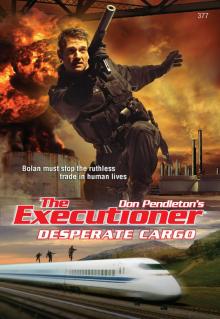 Desperate Cargo
Desperate Cargo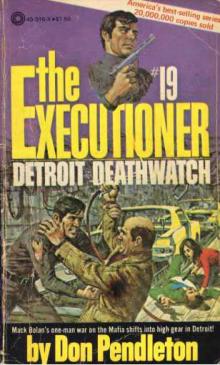 Detroit Deathwatch te-19
Detroit Deathwatch te-19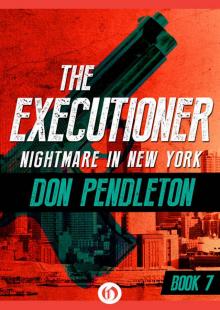 Nightmare in New York
Nightmare in New York Killpath
Killpath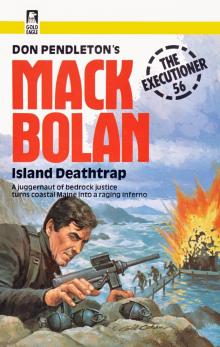 Executioner 056 - Island Deathtrap
Executioner 056 - Island Deathtrap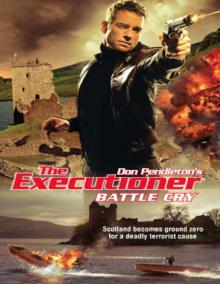 Battle Cry
Battle Cry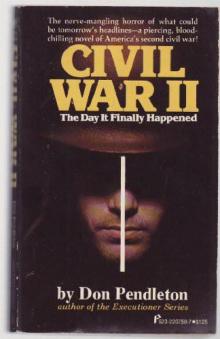 Don Pendleton - Civil War II
Don Pendleton - Civil War II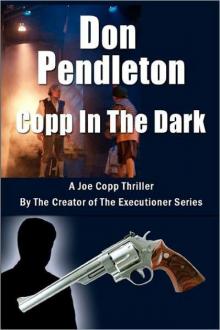 Copp In The Dark, A Joe Copp Thriller (Joe Copp Private Eye Series)
Copp In The Dark, A Joe Copp Thriller (Joe Copp Private Eye Series) China Crisis (Stony Man)
China Crisis (Stony Man)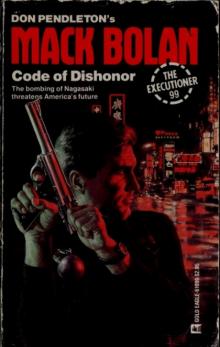 Code of Dishonor
Code of Dishonor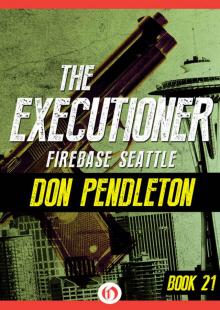 Firebase Seattle
Firebase Seattle Hard Targets
Hard Targets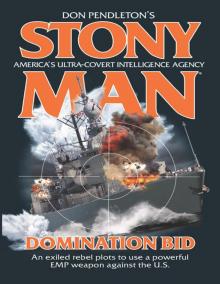 Domination Bid
Domination Bid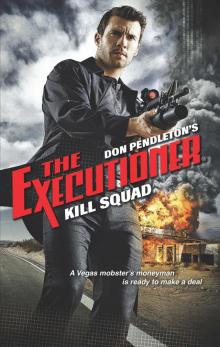 Kill Squad
Kill Squad Slayground
Slayground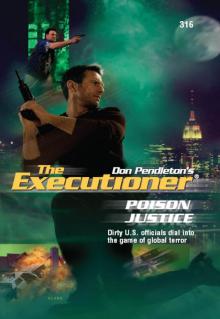 Poison Justice
Poison Justice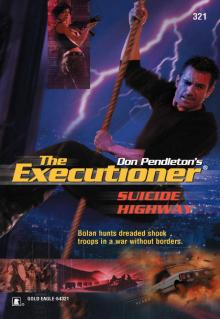 Suicide Highway
Suicide Highway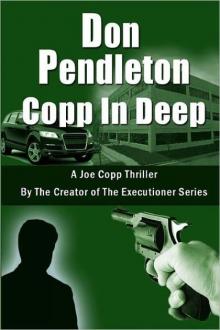 Copp In Deep, A Joe Copp Thriller (Joe Copp Private Eye Series)
Copp In Deep, A Joe Copp Thriller (Joe Copp Private Eye Series)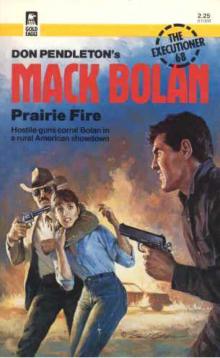 Prairie Fire
Prairie Fire Ninja Assault
Ninja Assault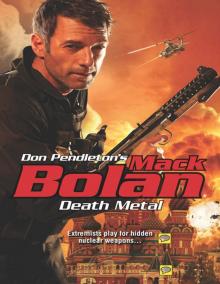 Death Metal
Death Metal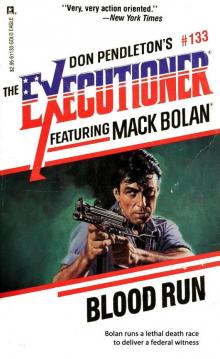 Blood Run
Blood Run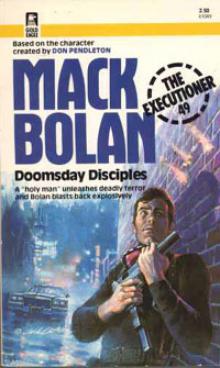 Doomsday Disciples te-49
Doomsday Disciples te-49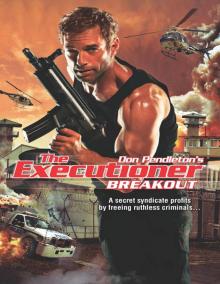 Breakout
Breakout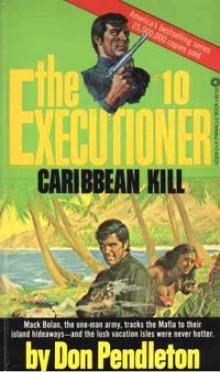 Caribbean Kill te-10
Caribbean Kill te-10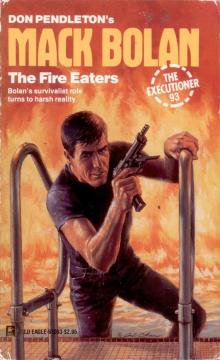 Fire Eaters
Fire Eaters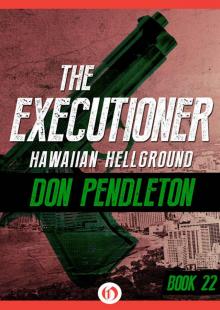 Hawaiian Hellground
Hawaiian Hellground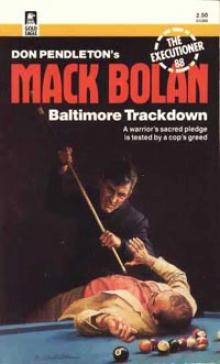 Baltimore Trackdown te-88
Baltimore Trackdown te-88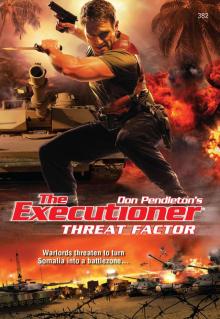 Threat Factor
Threat Factor Don Pendleton's Science Fiction Collection, 3 Books Box Set, (The Guns of Terra 10; The Godmakers; The Olympians)
Don Pendleton's Science Fiction Collection, 3 Books Box Set, (The Guns of Terra 10; The Godmakers; The Olympians)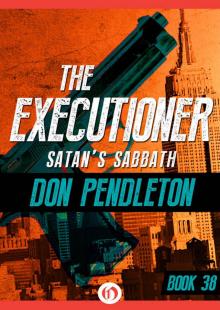 Satan’s Sabbath
Satan’s Sabbath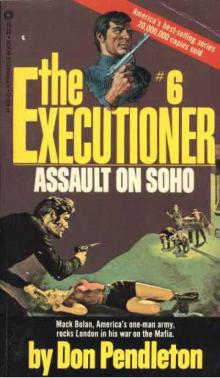 Assault on Soho te-6
Assault on Soho te-6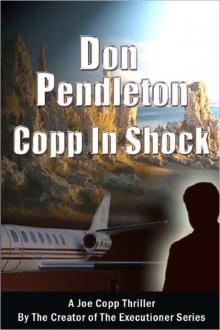 Copp In Shock, A Joe Copp Thriller (Joe Copp Private Eye Series)
Copp In Shock, A Joe Copp Thriller (Joe Copp Private Eye Series)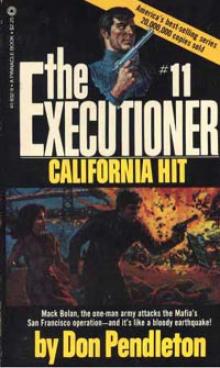 California Hit te-11
California Hit te-11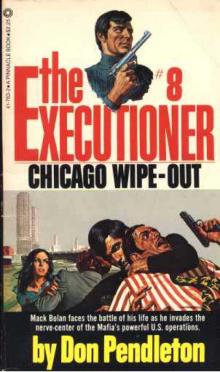 Chicago Wipe-Out te-8
Chicago Wipe-Out te-8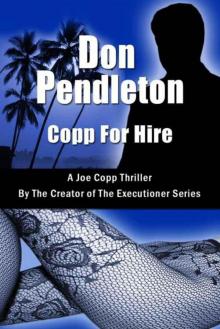 Copp For Hire, A Joe Copp Thriller (Joe Copp Private Eye Series)
Copp For Hire, A Joe Copp Thriller (Joe Copp Private Eye Series) Point Position
Point Position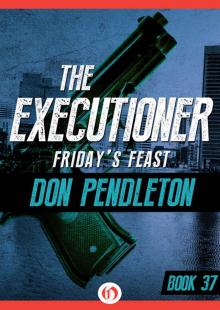 Friday’s Feast
Friday’s Feast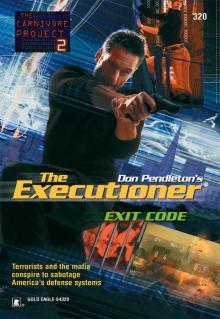 Exit Code
Exit Code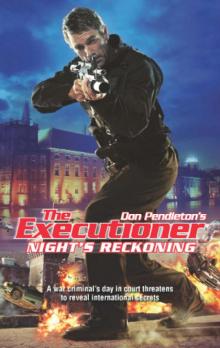 Night's Reckoning
Night's Reckoning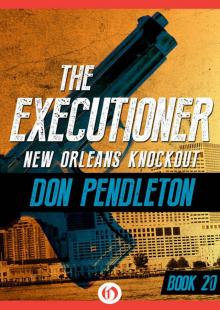 New Orleans Knockout
New Orleans Knockout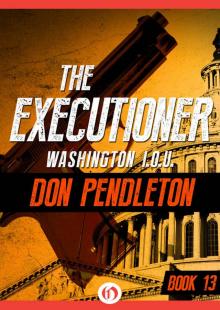 Washington I.O.U.
Washington I.O.U.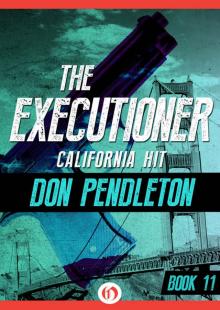 California Hit
California Hit Blood Vendetta
Blood Vendetta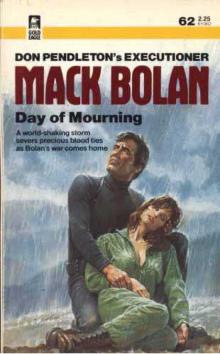 Day of Mourning te-62
Day of Mourning te-62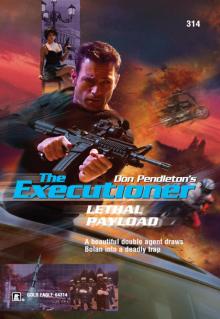 Lethal Payload
Lethal Payload Boston Blitz
Boston Blitz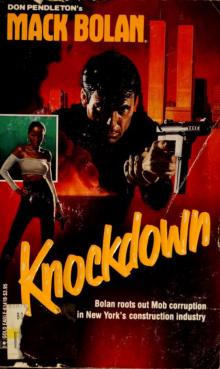 Knockdown
Knockdown Blood Sport te-46
Blood Sport te-46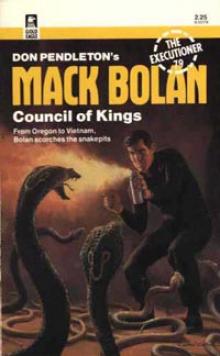 Council of Kings te-79
Council of Kings te-79 Terrorist Dispatch (Executioner)
Terrorist Dispatch (Executioner)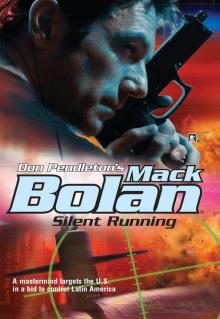 Silent Running
Silent Running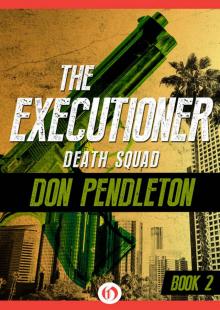 Death Squad
Death Squad Deadly Salvage
Deadly Salvage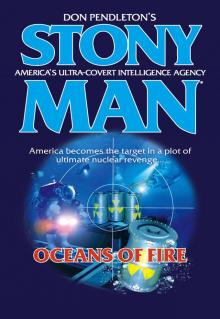 Oceans of Fire
Oceans of Fire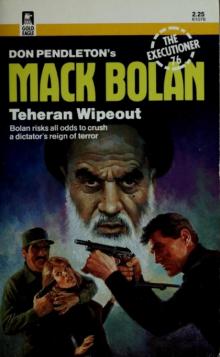 Teheran Wipeout
Teheran Wipeout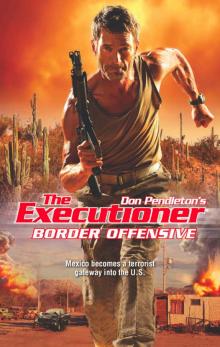 Border Offensive
Border Offensive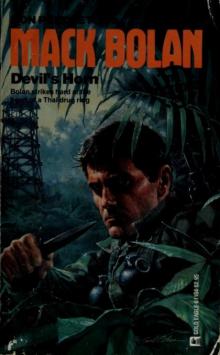 Devil's Horn
Devil's Horn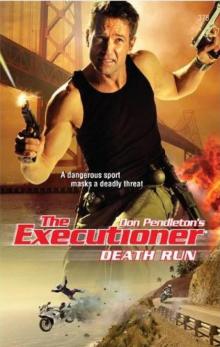 Death Run
Death Run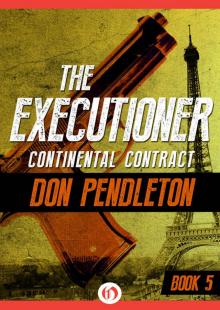 Continental Contract
Continental Contract Savage Deadlock
Savage Deadlock Eye to Eye: Ashton Ford, Psychic Detective
Eye to Eye: Ashton Ford, Psychic Detective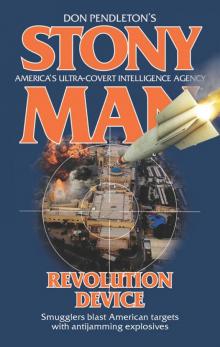 Revolution Device
Revolution Device Heart to Heart: Ashton Ford, Psychic Detective
Heart to Heart: Ashton Ford, Psychic Detective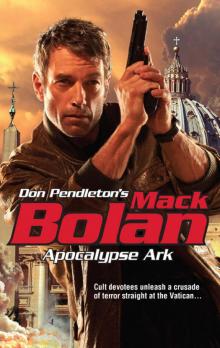 Apocalypse Ark
Apocalypse Ark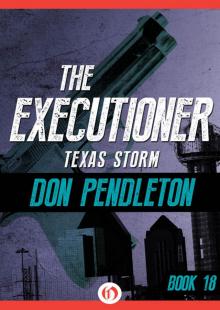 Texas Storm
Texas Storm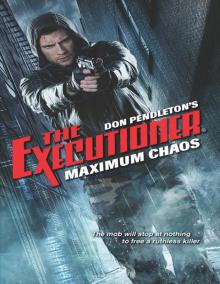 Maximum Chaos
Maximum Chaos Sensor Sweep
Sensor Sweep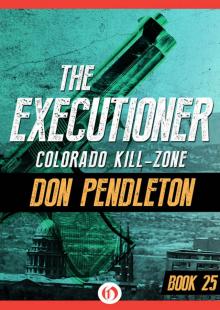 Colorado Kill-Zone
Colorado Kill-Zone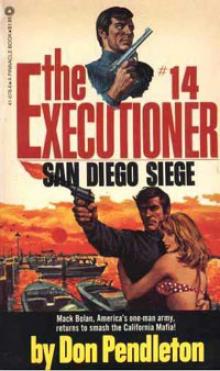 San Diego Siege te-14
San Diego Siege te-14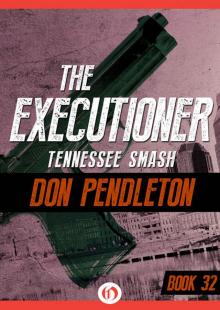 Tennessee Smash
Tennessee Smash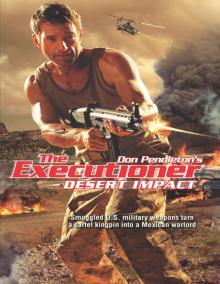 Desert Impact
Desert Impact Fire in the Sky
Fire in the Sky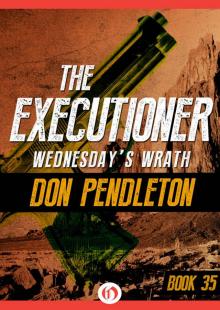 Wednesday’s Wrath
Wednesday’s Wrath Super Bolan - 001 - Stony Man Doctrine
Super Bolan - 001 - Stony Man Doctrine Chain Reaction
Chain Reaction Pacific Creed
Pacific Creed Death List
Death List Rebel Force
Rebel Force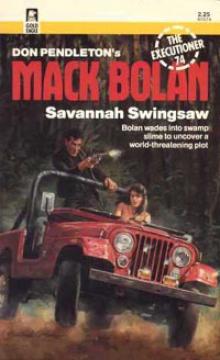 Savannah Swingsaw te-74
Savannah Swingsaw te-74 Heart to Heart
Heart to Heart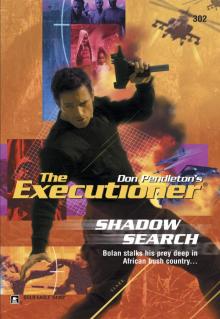 Shadow Search
Shadow Search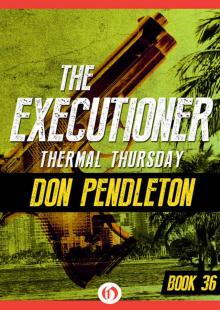 Thermal Thursday
Thermal Thursday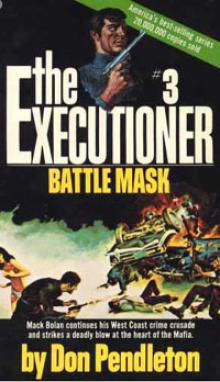 Battle Mask te-3
Battle Mask te-3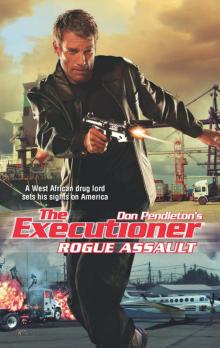 Rogue Assault
Rogue Assault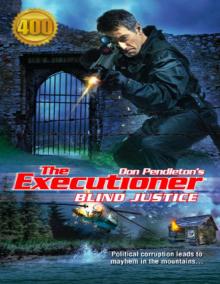 Blind Justice
Blind Justice Cold Fusion
Cold Fusion Nigeria Meltdown
Nigeria Meltdown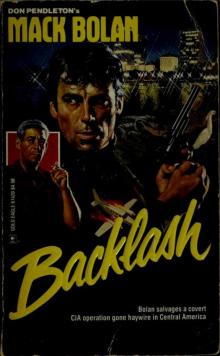 Backlash
Backlash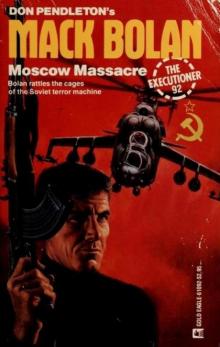 Moscow Massacre
Moscow Massacre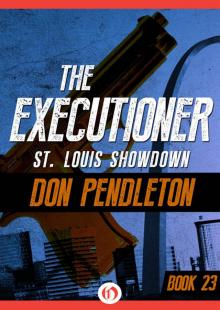 St. Louis Showdown
St. Louis Showdown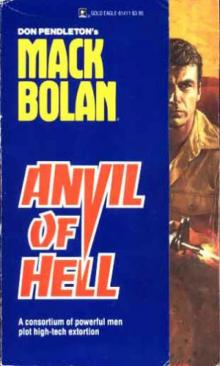 Anvil of Hell
Anvil of Hell Life to Life: Ashton Ford, Psychic Detective
Life to Life: Ashton Ford, Psychic Detective Amazon Impunity
Amazon Impunity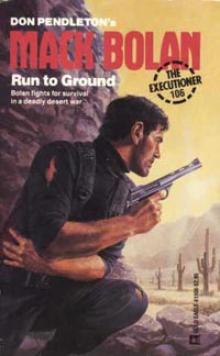 Run to Ground te-106
Run to Ground te-106 Save the Children te-94
Save the Children te-94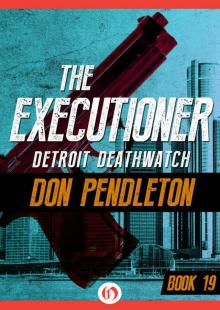 Detroit Deathwatch
Detroit Deathwatch Shadow Hunt
Shadow Hunt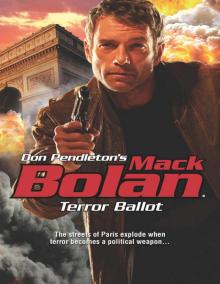 Terror Ballot
Terror Ballot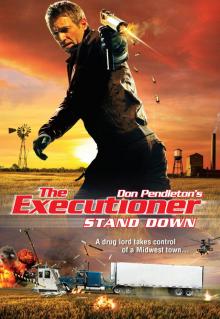 Stand Down
Stand Down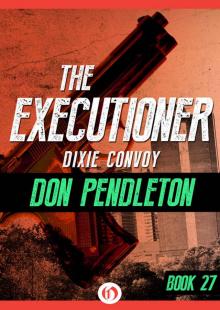 Dixie Convoy
Dixie Convoy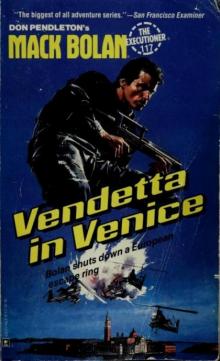 Vendetta in Venice
Vendetta in Venice War Against the Mafia
War Against the Mafia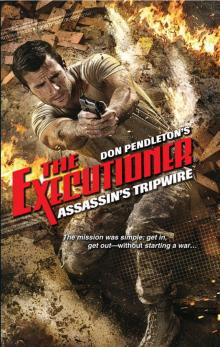 Assassin's Tripwire
Assassin's Tripwire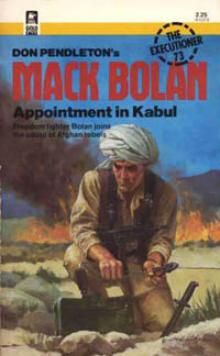 Appointment in Kabul te-73
Appointment in Kabul te-73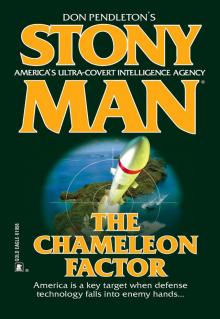 The Chameleon Factor
The Chameleon Factor Pirate Offensive
Pirate Offensive Prison Code
Prison Code Firebase Seattle te-21
Firebase Seattle te-21 Ground Zero
Ground Zero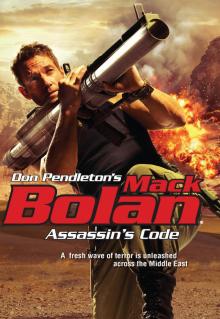 Assassin's Code
Assassin's Code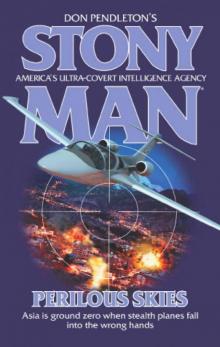 Perilous Skies (Stony Man)
Perilous Skies (Stony Man) Toxic Terrain
Toxic Terrain Canadian Crisis
Canadian Crisis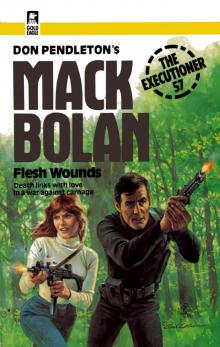 Executioner 057 - Flesh Wounds
Executioner 057 - Flesh Wounds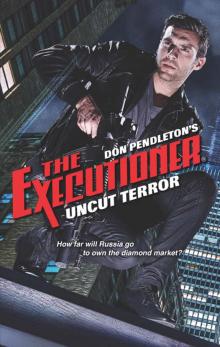 Uncut Terror
Uncut Terror War Everlasting (Superbolan)
War Everlasting (Superbolan) Nuclear Reaction
Nuclear Reaction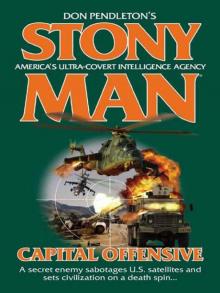 Capital Offensive (Stony Man)
Capital Offensive (Stony Man) Beirut Payback te-67
Beirut Payback te-67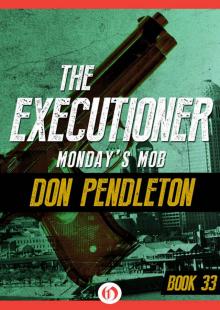 Monday’s Mob
Monday’s Mob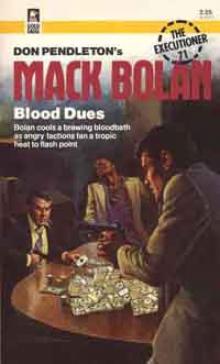 Blood Dues te-71
Blood Dues te-71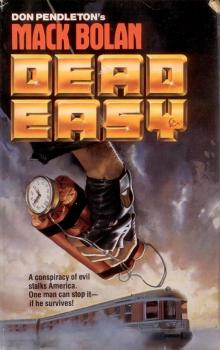 Dead Easy
Dead Easy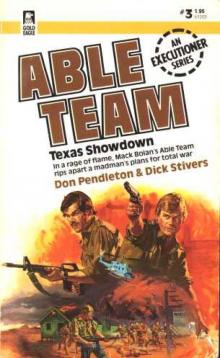 Texas Showdown at-3
Texas Showdown at-3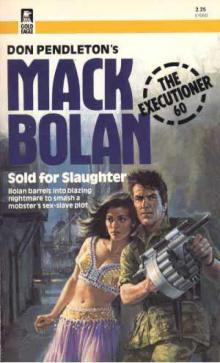 Sold for Slaughter
Sold for Slaughter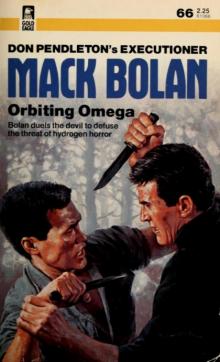 Orbiting Omega
Orbiting Omega Copp On Ice, A Joe Copp Thriller (Joe Copp Private Eye Series)
Copp On Ice, A Joe Copp Thriller (Joe Copp Private Eye Series) Rebel Blast
Rebel Blast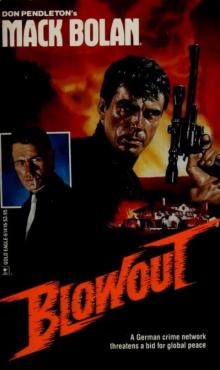 Blowout
Blowout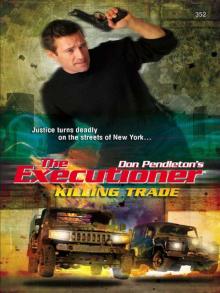 Killing Trade
Killing Trade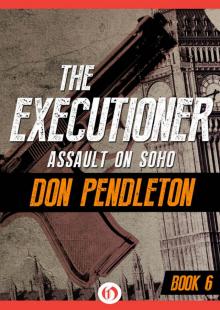 Assault on Soho
Assault on Soho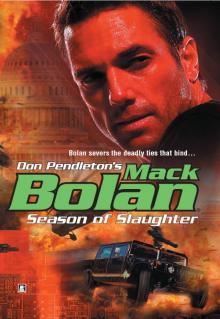 Season of Slaughter
Season of Slaughter Collision Course
Collision Course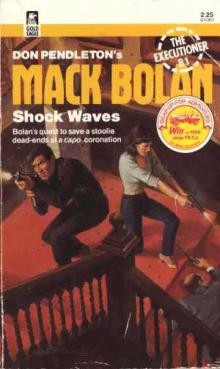 Shock Waves
Shock Waves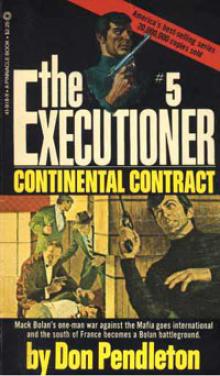 Continental Contract te-5
Continental Contract te-5 Dead Reckoning
Dead Reckoning Enemies Within
Enemies Within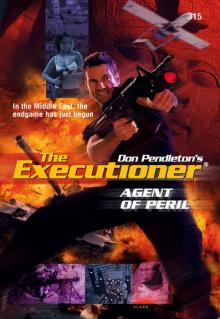 Agent of Peril
Agent of Peril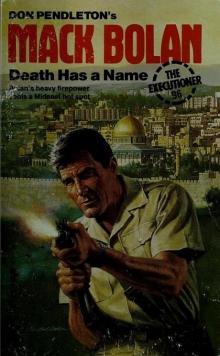 Death Has a Name
Death Has a Name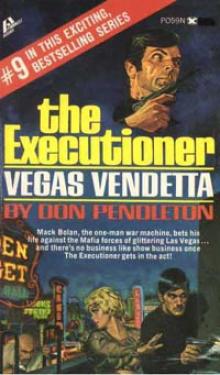 Vegas Vendetta te-9
Vegas Vendetta te-9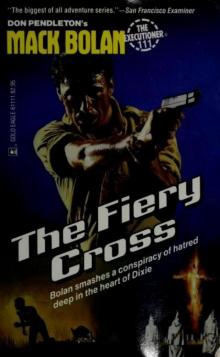 The Fiery Cross
The Fiery Cross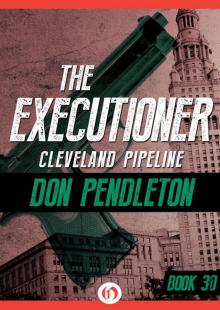 Cleveland Pipeline
Cleveland Pipeline Armed Response
Armed Response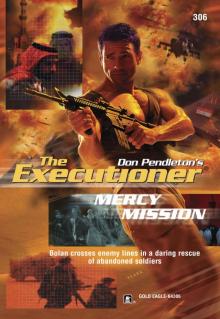 Mercy Mission
Mercy Mission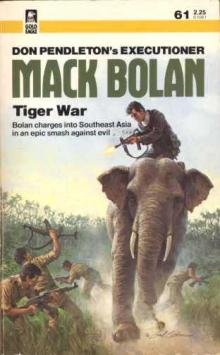 Tiger War te-61
Tiger War te-61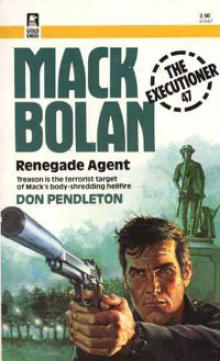 Renegade Agent te-47
Renegade Agent te-47 Damage Radius
Damage Radius Eye to Eye
Eye to Eye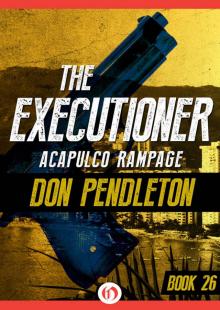 Acapulco Rampage
Acapulco Rampage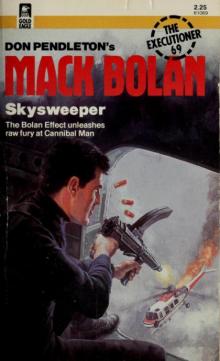 Skysweeper
Skysweeper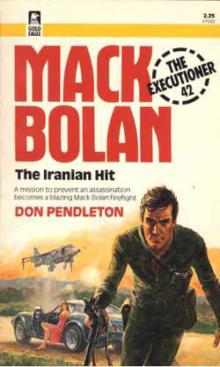 The Iranian Hit te-42
The Iranian Hit te-42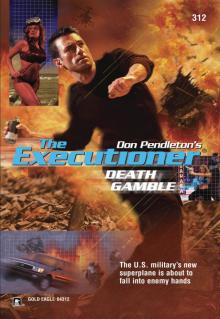 Death Gamble
Death Gamble Rebel Trade
Rebel Trade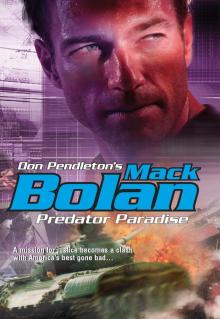 Predator Paradise
Predator Paradise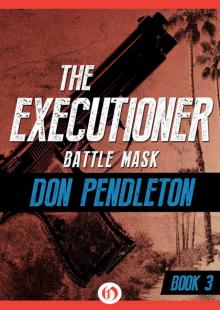 Battle Mask
Battle Mask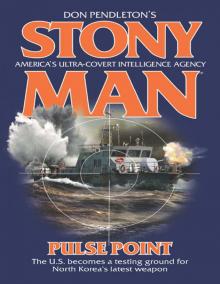 Pulse Point
Pulse Point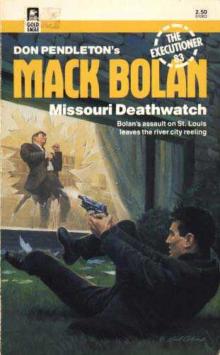 Missouri Deathwatch
Missouri Deathwatch Blood Tide
Blood Tide Missile Intercept
Missile Intercept Jersey Guns
Jersey Guns Hostile Force
Hostile Force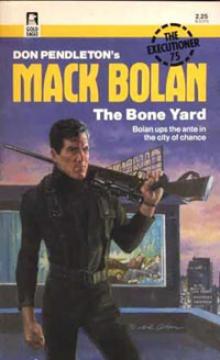 The Bone Yard te-75
The Bone Yard te-75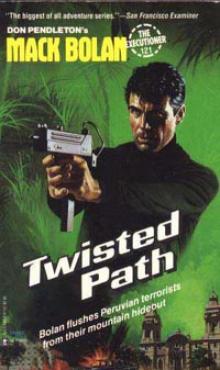 Twisted Path te-121
Twisted Path te-121 Mind to Mind
Mind to Mind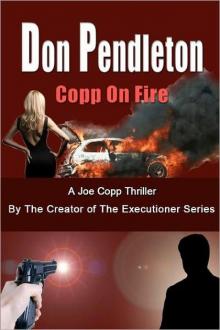 Copp On Fire, A Joe Copp Thriller (Joe Copp, Private Eye Series)
Copp On Fire, A Joe Copp Thriller (Joe Copp, Private Eye Series)